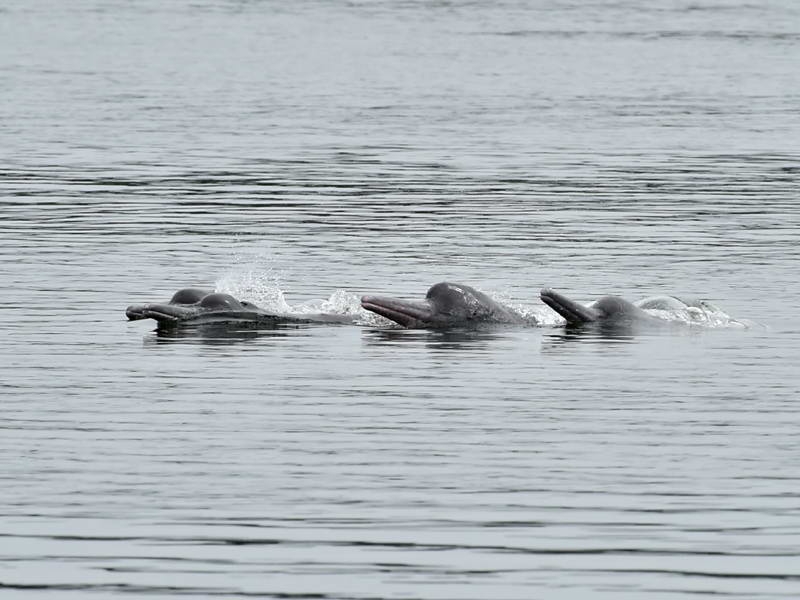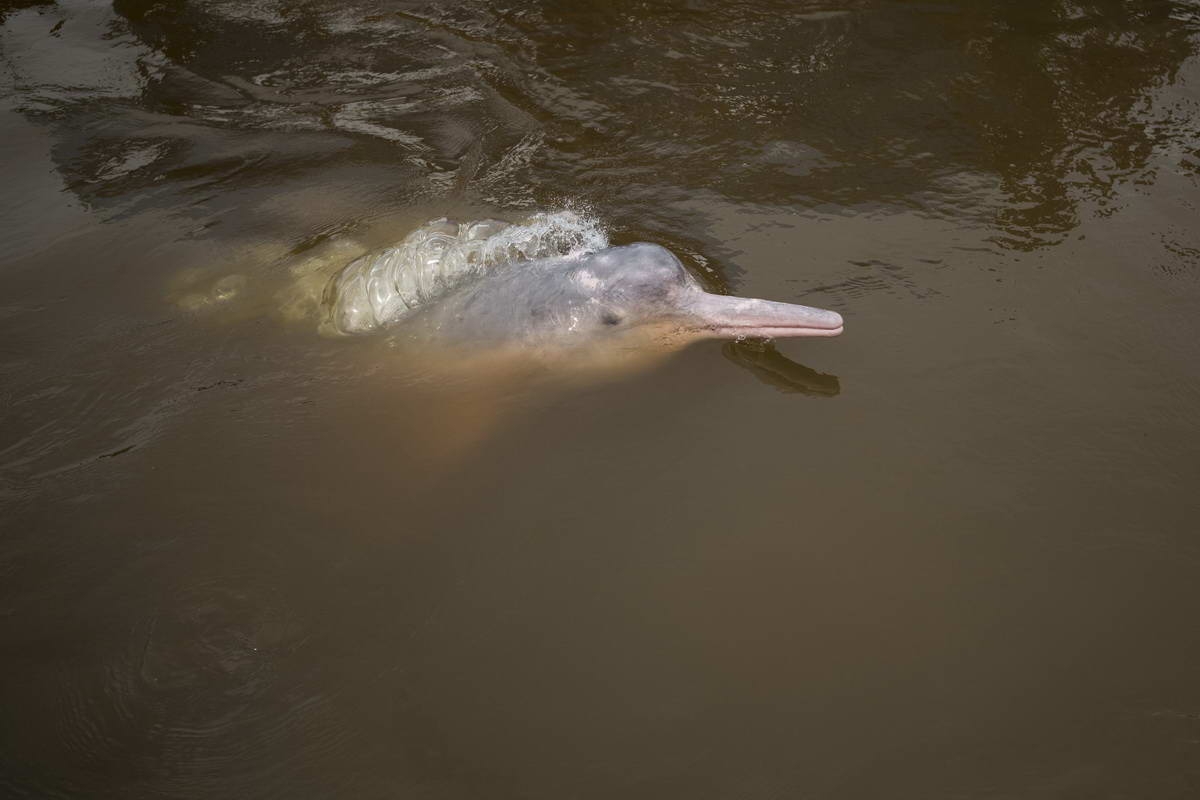
© Amazon river dolphin (Inia geoffrensis)
(c) Federico Mosquera/Fundación Omacha

© Amazon river dolphin (Inia geoffrensis)
(c) Clóvis Fabiano/WWF-Brasil

© Amazon river dolphin (Inia geoffrensis)
(c) WWF

© Amazon river dolphin (Inia geoffrensis)
(c) WWF

© Amazon river dolphin (Inia geoffrensis)
(c) WWF
Amazon poisoned with toxic Mercury
November 29, 2018
The poison threatens humans, animals and plantsThe Amazon region is struggling with an invisible enemy: Mercury deposits from gold mining endanger the health of humans, animals and plants. Around 1.5 million people in the river system are already affected by the health problem, according to a new report by the WWF. The World Health Organization (WHO) lists mercury as one of the ten most worrisome chemicals for global health. With the Amazon, the mercury pollution hits a region whose flora and fauna are already severely damaged by progressive deforestation and dam projects.
According to the new WWF report, much of the mercury entry comes from small-scale gold mining, which accounts for around 15 percent of the gold mined in the Amazon region. Although all the Amazon riparian states have signed the United Nations Mercury Convention in 2013, they have not done enough to counter the mercury crisis since WWF's point of view.
"
The Amazon states must provide economic support to the miners when they exit the gold mining industry. The local people need alternatives to the poisonous business with the gold, which destroys them as well as entire regions," says Dirk Embert, South American consultant at WWF Germany. Mining communities and local communities would need to work better together and promote mercury-free mining techniques in existing gold mining.
However, the responsibility does not end in the Amazon: "
Gold is traded worldwide. In the duty thus are dealers, banks and consumers also in Germany. Gold should always come from certified sources. Importing minerals such as gold needs to be tied to binding sustainability criteria across the EU," Embert continued.
Among the animals specifically affected by the mercury entry are the
river dolphins from the Amazon. In recent months, the WWF has caught a total of 50 river dolphins in five South American countries for a short while in order to learn more about the still unexplored animals. The dolphins were equipped with GPS transmitters and also examined - including the mercury content in their bodies. Outcome: Around 26 percent of them had mercury levels above WHO recommended levels for humans.
Background
The Amazon region is a hotspot of biodiversity. So far, more than 40,000 plant species, 427 mammal species (including jaguar, ocelot, giant otter and river dolphin), 1,294 bird species (including imperial eagle, toucans, macaws and hummingbirds) and more than 3,000 different fish species have been identified. Many areas in the rainforest of Amazonia are still virtually unexplored. At the same time, Amazon is a habitat for people: around 320 different indigenous populations live here, often in the traditional way.